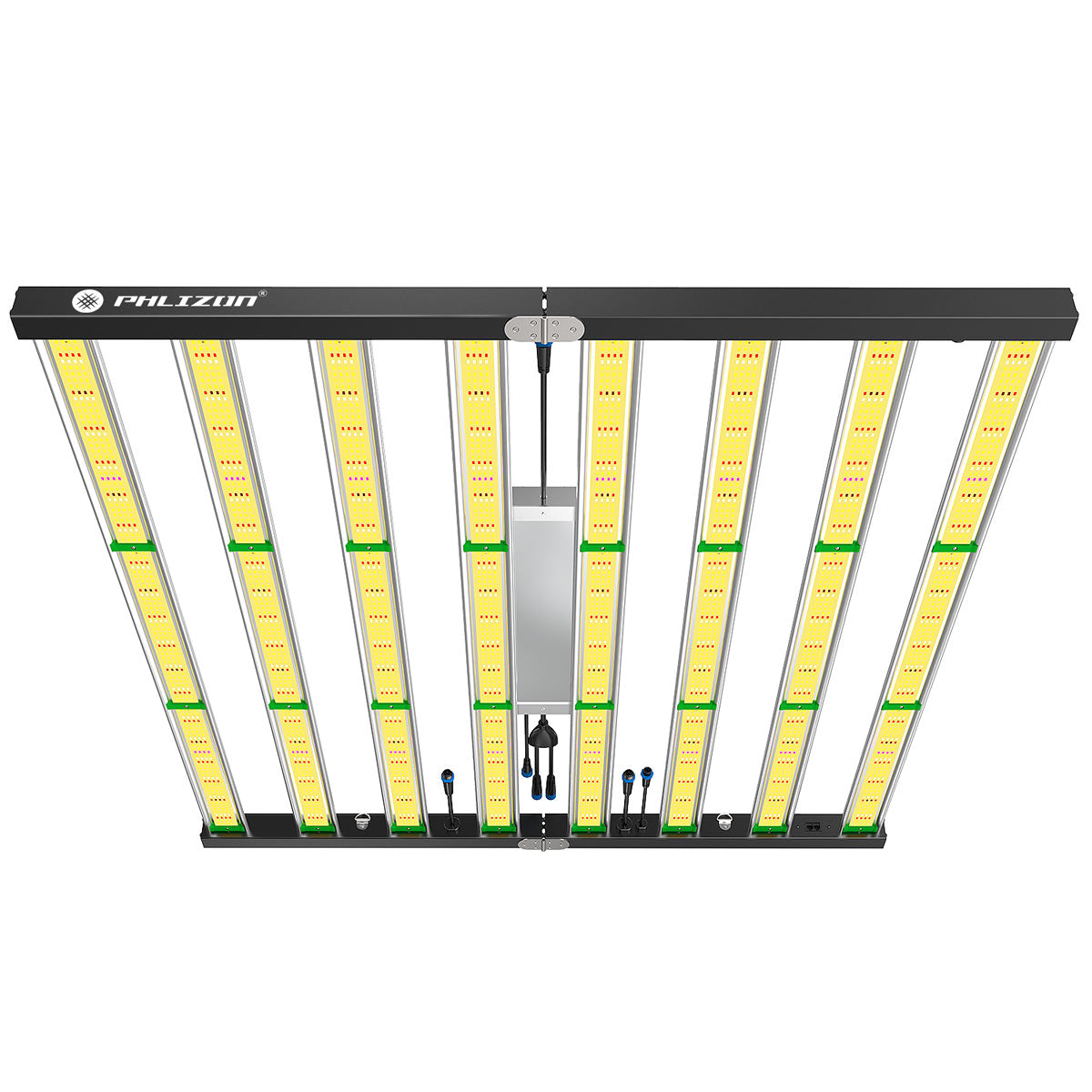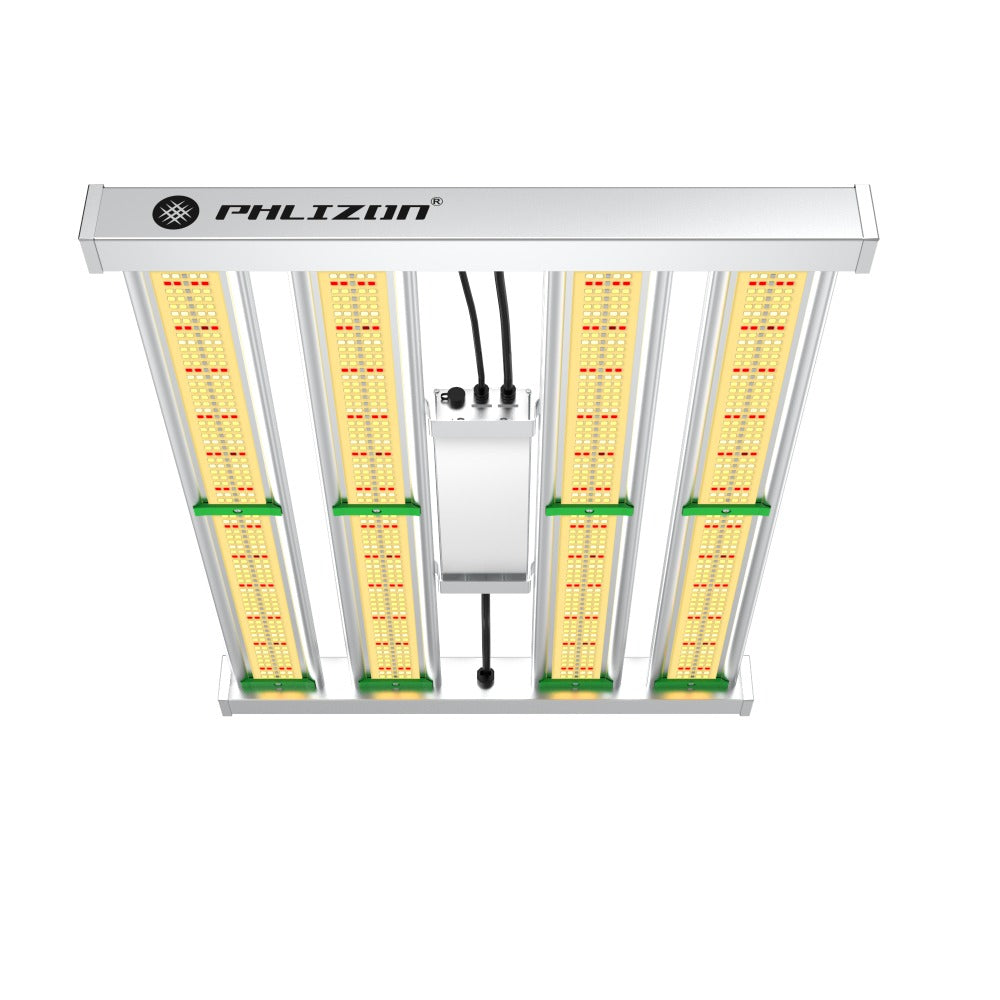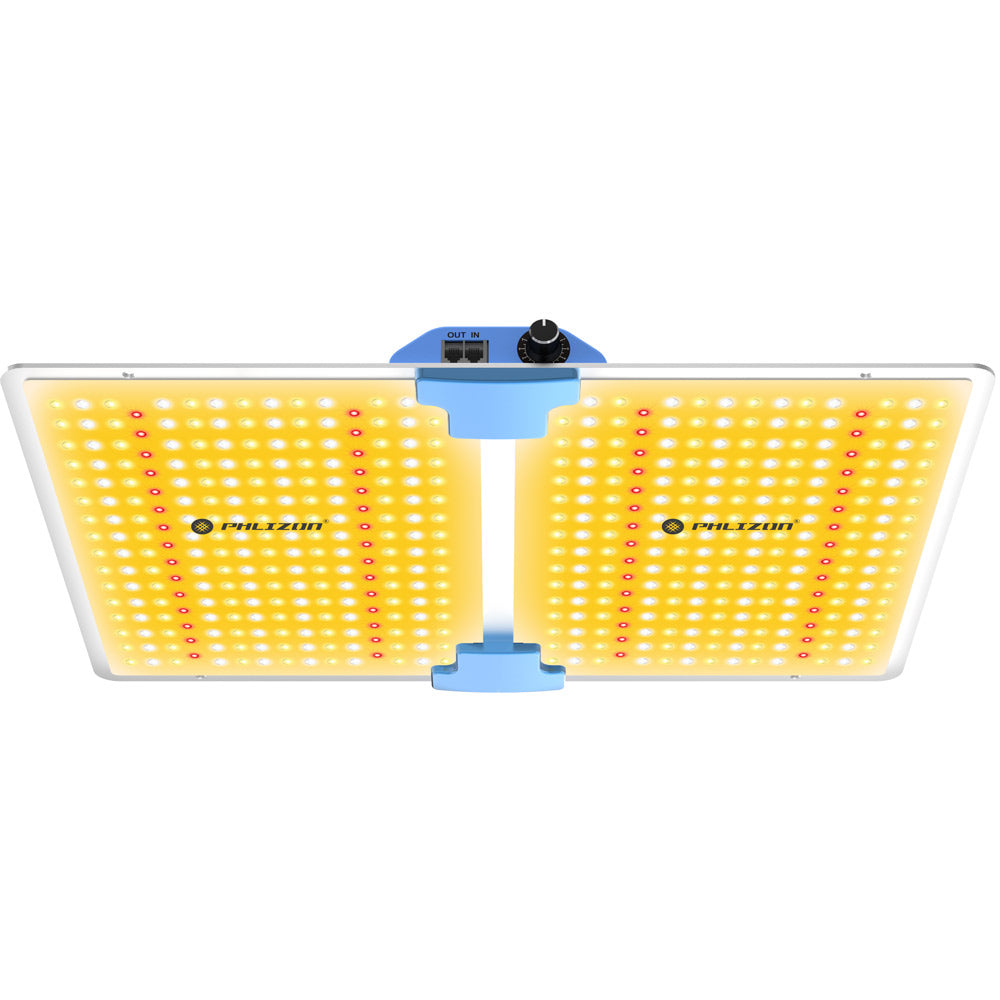Menu
What Color Light is Worst for Plant Growth?
Plants rely on light for photosynthesis, a crucial process that enables them to produce energy and grow. However, not all light is created equal when it comes to plant growth. Different colors of light have varying effects on plants, influencing their development, flowering, and overall health. While certain wavelengths, like blue and red, are essential for robust growth, others are less effective or even detrimental. This article explores which color light is the least effective for plant growth and why, drawing on scientific insights into how plants interact with the light spectrum.
Understanding Light and Plant Growth
Light is essential for every plant. Chlorophyll allows plants to convert energy from light into sugars. Plants use light in the PAR (photosynthetically active radiation) region of wavelengths (400nm-700nm) measured in nanometers (nm). Nanometers are a universal unit of measurement but also used to measure spectrum of light – humans can only detect visible light spectrum wavelengths (380-740nm). The visible light spectrum comprises PAR, and during photosynthesis, plants absorb this radiation to produce sugars required to grow major parts, including roots, stems, and leaves. However, various wavelength ranges within the visible light spectrum affect plants differently.
The McCree curve, developed by American botanist Warren L. McCree in the 1970s, is a graphical representation of the relative efficiency of different wavelengths of light in driving photosynthesis in plants. You can see from the McCree curve that in general red photons (600nm to 700nm) are the most photosynthetically efficient, green (500nm to 600nm) a little less efficient and blue (400 to 700nm) the least efficient. Although a little outdated and not accurate for all plant types, this curve highlights that not all wavelengths contribute equally to plant growth.
Green Light: The Least Effective for Plant Growth
Green light is considered the least efficient wavelength in the visible spectrum for photosynthesis, but it is still useful in photosynthesis and regulates plant architecture. While most plants reflect more green than any other in the visible spectrum, a relatively small percentage of green light is transmitted through or reflected by the leaves. The majority of green light is useful in photosynthesis. Green light is the least efficiently used color of light in the visible spectrum.
Plants are hardly sensitive to green light. As far as we know, they lack receptors for this color. This is probably the case because in practice plants do not absorb this color. Plants which are grown in green light only will be exceedingly weak and rarely grow old. Green light is mostly reflected by plants (making them appear green), but a small amount is absorbed during photosynthesis. This might seem counterintuitive since plants appear green due to the reflection of green light, but it's primarily because chlorophyll, the pigment responsible for photosynthesis, poorly absorbs green wavelengths.
Other Less Effective Light Colors
Yellow and white light have the lowest effect on plant growth. Yellow light acts similarly to green and has little impact on plant growth. But most plants quickly absorb orange color without doing much damage; you don't have to worry about limiting their intake. Violet or purple light has a shorter wavelength and higher energy, and is thought to be effective as a secondary light source to facilitate growth and development of a plant’s leafy vegetation. However, on its own, violet does not affect plant growth very much.
Ultra-Violet (UV) light is harmful to plants, which can actually promote healthy growth as plants work to protect themselves against the light. Originally thought to be dangerous and unnecessary for plant growth, UV light does have some benefits for plants. When exposed to UV rays, plants increase their essential oil production to create a reflective barrier that acts as a natural sunblock. However, excessive UV exposure can stress plants and hinder growth, making it less ideal compared to PAR wavelengths.
Comparing Green Light to Blue and Red
Blue light is particularly beneficial for seedlings and young plants as it encourages compact, sturdy growth. Moreover, blue light can help regulate plant hormone levels, influencing phototropism and ensuring proper orientation towards light sources. Blue light is crucial for promoting healthy leaf growth and strong root development. It is absorbed by chlorophyll and triggers photosynthesis, contributing to the overall growth and vigor of plants.
Red light plays a vital role in the growth and flowering of plants. It is a primary driver of photosynthesis, stimulating the production of chlorophyll and facilitating the conversion of light energy into chemical energy. Additionally, red light enhances the flowering process, making it essential for plants that require abundant blooms. Red photons are the most photosynthetically efficient of all and therefore indoor growers want to maximize the amount of red in the grow light spectrum.
Truth be told, there’s no best light for your plant growth but a refined combination of both blue and red light can be pretty beneficial for indoor growing. Additionally, other light spectrums such as green, yellow, and IR all contribute to healthy plant development. A grow light that provides the entire PAR spectrum is ideal. Full-spectrum light that mimics natural sunlight is the best for indoor growing. For controlling specific aspects of plant growth and flowering, combinations of higher intensity light in the red and blue wavelength ranges are useful.
Practical Implications for Growers
Plants grown with 50 percent green and 50 percent red light were approximately 25 percent shorter than those grown under only red light, but approximately 50 percent taller than all plants grown under more than 25 percent blue light. Therefore, blue light suppressed extension growth more than green light in an enclosed environment. Twenty-five percent green light could substitute for the same percentage of blue light without affecting fresh weight. However, the electrical efficiency of the green LEDs was much lower than that of blue LEDs. One potential advantage of including green in a light spectrum is to reduce eye strain of employees.
For most small-scale, residential applications (like houseplants), cycling through specific colors isn’t necessary. A grow light that provides the entire PAR spectrum is ideal. PPFD (Photosynthetic Photon Flux Density) value, which indicates the amount of light emitted by a grow light, is another thing to watch out for. The ideal value for indoor plant growth will fall in the 500 to 700 µmol/m2 range. On average, most plants benefit from the grow light being on for 8 to 10 hours a day. However, depending on what kind of plant you have and how much existing light exposure there is, this number can vary.
View our products:
- https://www.phlizonstore.com/collections/all-products
- https://www.phlizonstore.com/collections/shop-by-collection
- https://www.phlizonstore.com/collections/qb-grow-lights
- https://www.phlizonstore.com/collections/grow-light-with-uv-ir-led
Conclusion
Green light stands out as the least effective color for plant growth due to its poor absorption by chlorophyll, the primary pigment driving photosynthesis. While it plays a minor role in photosynthesis and can penetrate deeper into plant canopies to support lower leaves, plants grown under green light alone are weak and stunted. Yellow and white light also have minimal impact, while UV light can be harmful in excess. For optimal plant growth, growers should prioritize blue and red wavelengths, ideally using full-spectrum LED lights that mimic natural sunlight to support all stages of development.
Frequently Asked Questions About Grow Light Color for Plant Growth
1. Why is green light the worst for plant growth?
Green light is the least effective because chlorophyll, the pigment responsible for photosynthesis, reflects most green wavelengths rather than absorbing them. This results in lower energy capture for photosynthesis, making green light less efficient compared to blue or red light.
2. Can plants grow under green light alone?
Plants can survive under green light, but they will be weak and stunted. Green light contributes minimally to photosynthesis and lacks the wavelengths needed to support robust growth, leading to poor development.
3. Are there any benefits to using green light for plants?
Yes, green light can penetrate deeper into plant canopies, supporting photosynthesis in lower leaves. It also helps reduce eye strain for growers working under grow lights, but its overall contribution to growth is limited.
4. Should I avoid green light in grow lights entirely?
No, green light doesn’t need to be avoided. Full-spectrum grow lights, which include green light alongside blue and red, provide a balanced spectrum that supports healthy plant growth. The key is ensuring blue and red wavelengths dominate for optimal photosynthesis.
5. What’s the best light color for indoor plant growth?
A combination of blue (400-520 nm) and red (600-700 nm) light is ideal, as these wavelengths are most efficiently absorbed by chlorophyll. Full-spectrum LED grow lights that mimic natural sunlight are recommended for most indoor gardening needs.
Featured blog
- Choosing a selection results in a full page refresh.

















